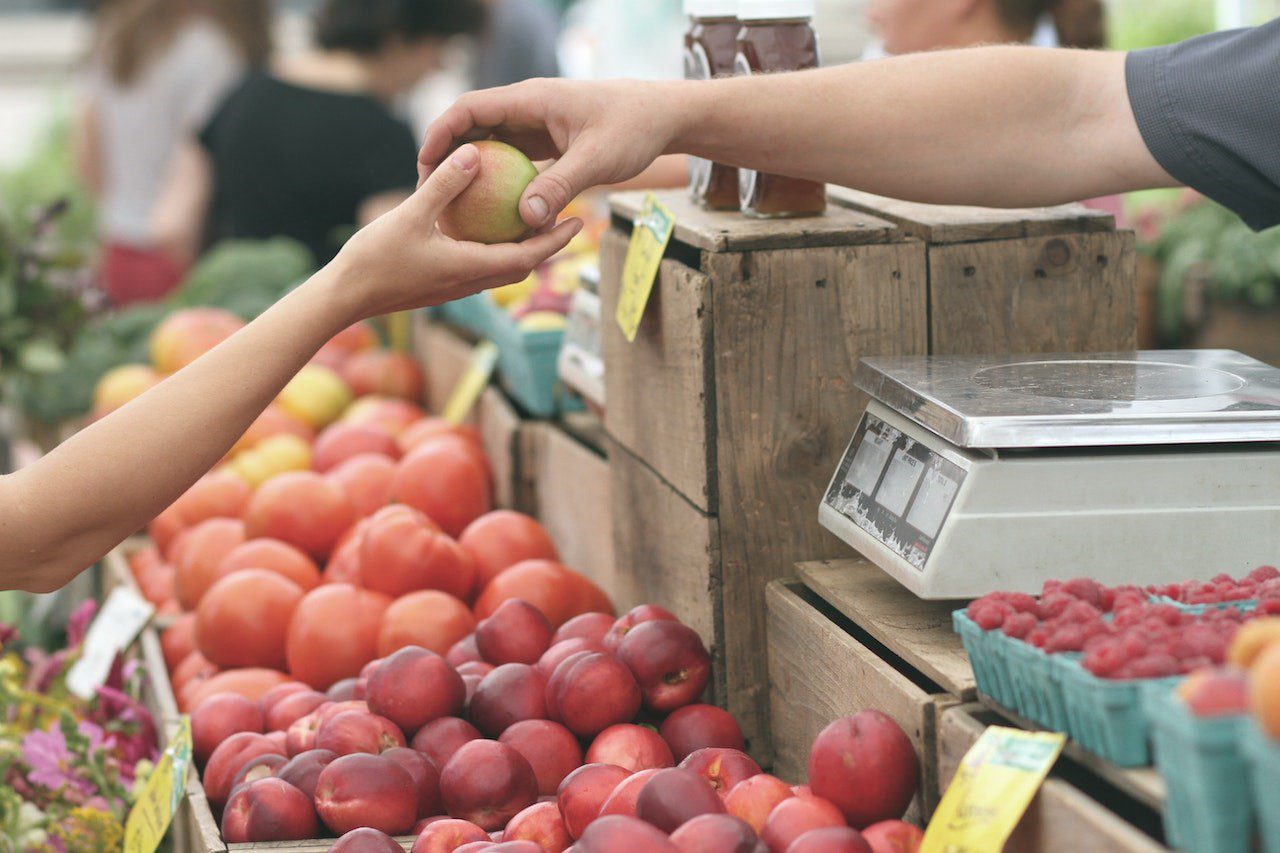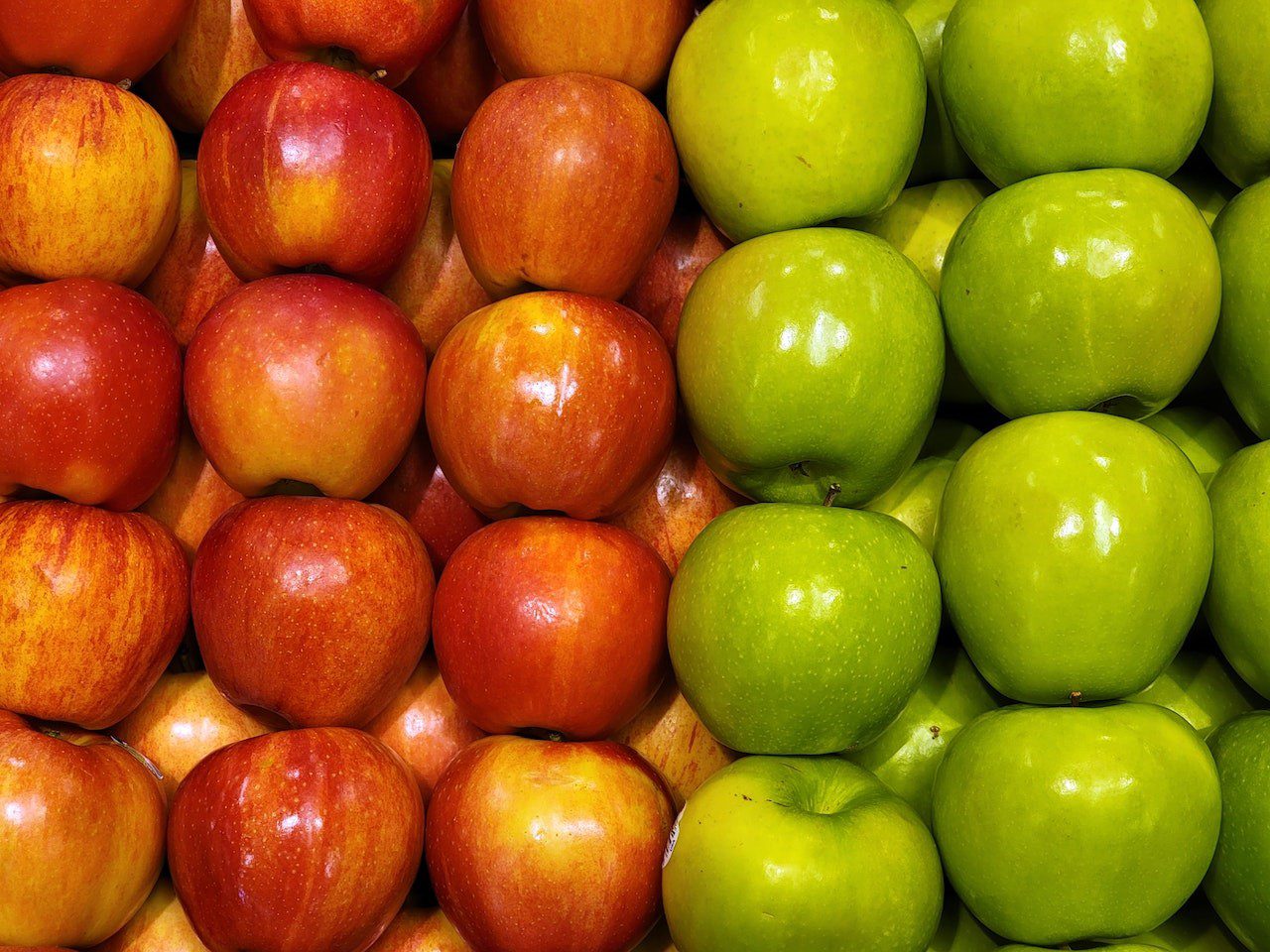Even if we follow the wisdom passed down through generations that tells us never to grocery shop on an empty stomach, vibrant displays of fresh produce still have the power to not only attract but often influence our buying decisions.
How produce is presented on produce display shelves is about more than just stacking fruits and vegetables. It’s an art, and when done right, can significantly boost sales and create a lasting impression on customers. Follow these tips, and you can elevate your produce presentation and get customers’ attention.
1. Use Colour Wisely
Colours have a natural hierarchy. Think of a rainbow: the transition from red to violet is both smooth and striking. In a grocery setting, grouping products by colour is more than just aesthetics—it’s about creating flow. For instance, place bright red tomatoes next to deep green cucumbers, followed by vibrant yellow bell peppers. This flow keeps the eyes moving and encourages customers to view more produce instinctively.
2. Height Matters
A flat table of produce is easy, but it’s not necessarily the most effective. Introducing height variations can make a world of difference. Multi-tiered displays create a sense of abundance and variety. Moreover, they allow more visibility for products placed at the back. Using the right produce display stands can lift products off the table and into the customer’s line of sight.
3. Freshness Front and Center
Freshness sells. It’s as simple as that. A wilted leaf or an overripe banana can turn customers off an entire section. Regularly rotate your stock so that the freshest items are at the forefront. Ensure regular checks throughout the day and remove items that are past their prime.
4. Highlight Seasonal Picks
Changing seasons brings a sense of anticipation. When summer finally arrives, we look forward to juicy watermelons and peaches. Come autumn, it’s all about pumpkins and apples. Use this to your advantage. Have a designated spot in the produce section to showcase seasonal items. Not only does this provide a nice change of scenery, but it also gives customers a reason to visit your store and see what’s new.
5. Add Informative Signage
While most customers know the basic fruits and vegetables, there’s always something new or uncommon they might not be familiar with. Informative signs can help bridge this gap by naming the product and providing details like taste profiles, preparation suggestions, and health benefits. It’s not about overwhelming customers with information, mind you, but providing them just enough to pique their curiosity.
6. Simplify the Layout
While variety is good, an overpacked display can be overwhelming. There’s a fine balance between abundance and clutter. Keep walkways clear and arrange produce in a way that’s easy to navigate. This will help customers feel relaxed, encouraging them to take their time exploring.
7. Engage with Customers
Last but not least, engage with your customers. If they’re looking at a vegetable they’re unfamiliar with, offer preparation tips. If they’re returning a product, ask for feedback. This interaction not only helps with sales but can provide valuable insights into how to further improve your produce section.

8. Incorporate Local Produce
Celebrating local produce adds a layer of authenticity and connection to your display. Customers often appreciate the chance to support local farmers and enjoy fresh, seasonal offerings. Signage can help differentiate these items, and you might even consider spotlighting the farms you’re sourcing from. Not only does this promote community, but it also adds another layer of story to your produce section.
9. Use Lighting to Your Advantage
Good lighting can dramatically influence the look of your produce. Natural light is ideal, but not always practical depending on the store’s design. Strategically placed artificial lights can emulate natural lighting and make the colours pop. Avoid harsh lighting that can create shadows and make fresh produce look unappealing.
10. Thematic Arrangements
Don’t just group items by type or colour; consider arranging them by cuisine or recipe. For instance, place avocados, limes, and cilantro together for a ‘guacamole corner.’ This not only looks inviting but also adds a practical angle for shoppers looking for meal inspiration.
11. Offer Taste Tests
If feasible, a tasting station with small samples can make a big difference. This could be particularly effective for introducing new or seasonal items. Tasting engages another sense and can tip the scales toward a purchase decision. Always make sure to adhere to food safety regulations when offering samples.
12. Interactive Displays
Why not bring technology into the mix? Tablets or touch screens offering recipes, nutritional facts, or sourcing information can engage customers at another level. Plus, it’s an excellent way to offer more details without cluttering your space with signs.
13. Create Shopping Guides
While many shoppers prefer to navigate the store on their own, some benefit from a bit more guidance. Creating simple, take-home shopping guides can help. These could list seasonal items, provide a few recipes, or even offer storage tips for fresh produce. It’s a small touch but one that adds considerable value.
14. Offer Bundle Deals
Finally, consider offering special pricing for produce combinations. For example, selling all the ingredients for a salad or stir-fry in a single, discounted package can simplify shopping for your customers and also promote a quicker turnover of fresh items.
15. Seek Customer Input
Beyond engaging with customers in the store, consider soliciting feedback through other channels, such as surveys or social media. You could ask what produce varieties they’d like to see, what they like about the current presentation, and what could be improved. This not only gives you fresh perspectives but also makes your customers feel valued and heard.
16. Regular Staff Training
Staff should be knowledgeable not just about where things are but also about the produce itself. Regular training sessions can equip them with the information they need to assist customers better, whether it’s about organic versus non-organic options, how to pick the ripest melon, or how to store fresh herbs.
In Summary
Elevating produce presentation is about understanding customer behavior, using visual cues effectively, and ensuring freshness at all times. By following these guidelines, you can build a produce section that is appealing, and helpful and keeps customers returning for more.
Your produce section is more than just a place to showcase what’s for sale; it’s an experience that can be enhanced with thoughtfulness, inventiveness, and a strong emphasis on customer engagement. If you include these recommendations in your current plan, you’ll be well on your way to establishing a produce display that not only captivates but also educates and inspires customers.












